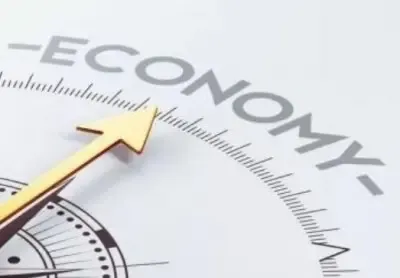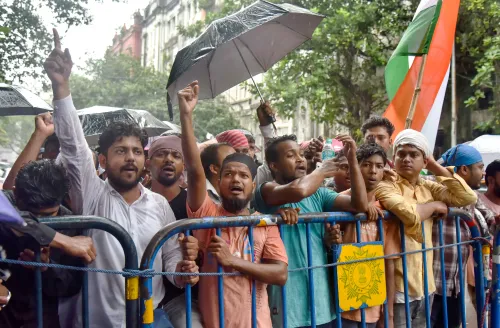Is India’s Growth Outlook Resilient Amidst Domestic Drivers?

Synopsis
Key Takeaways
- India's growth outlook remains strong due to domestic drivers.
- Projected growth for 2025-26 is now 6.8 percent.
- Inflation has been adjusted down to 2.6 percent.
- Favorable agricultural conditions are expected to boost rural demand.
- The RBI maintains a neutral monetary policy.
New Delhi, Oct 15 (NationPress) India’s growth outlook continues to show resilience, bolstered by domestic drivers, even in the face of weak external demand. The Reserve Bank of India (RBI) indicated on Wednesday that this growth is likely to receive additional support from a favorable monsoon, decreasing inflation, monetary easing, and the positive effects of recent GST reforms.
While the growth forecast for the financial year 2025-26 is being adjusted upward, the forward-looking projections for Q3 and beyond may be slightly lower than previously anticipated, largely due to tariff-related developments. This decline is expected to be partially mitigated by the benefits brought by the rationalization of GST rates, as noted in the minutes of the Monetary Policy Committee (MPC) meeting held from September 29 to October 1, which were made public by the central bank.
The domestic economic growth was robust in Q1 2025-26, with high-frequency indicators suggesting continued strength in Q2.
However, a softening is anticipated thereafter due to tariff impacts, although GST rationalization could cushion the effect. Several indicators point to promising agricultural prospects this year, leading to strong rural demand, as outlined in the MPC minutes.
The growth of the services sector and stable employment conditions are likely to further support overall growth.
Nevertheless, external demand is expected to remain subdued, given the ongoing tariff and trade uncertainties. Overall, the growth outcome for 2025-26 is now projected to be higher at 6.8 percent, compared to the 6.5 percent anticipated in August, even though the outlook for the second half of the year appears softer, according to the RBI.
The headline CPI inflation fell to an eight-year low of 1.6 percent in July before rising to 2.1 percent in August. This decrease was mainly attributed to improved food supply conditions and government measures to manage the supply chain.
Due to GST rationalization and stable food prices, the inflation projection for 2025-26 has been revised down to 2.6 percent from 3.1 percent in August and 3.7 percent in June. The inflation outlook for Q1 2026-27 is also positive and has been adjusted downward.
Although growth is currently strong, its outlook is expected to be softer and below aspirations. The favorable outlook for both headline and core inflation due to the downward revision of projections offers room for further supportive policies aimed at growth. Several initiatives by the government and the Reserve Bank are anticipated to bolster growth moving forward, as stated in the MPC minutes.
The central bank has maintained the policy repo rate at 5.50 percent with a neutral stance.









